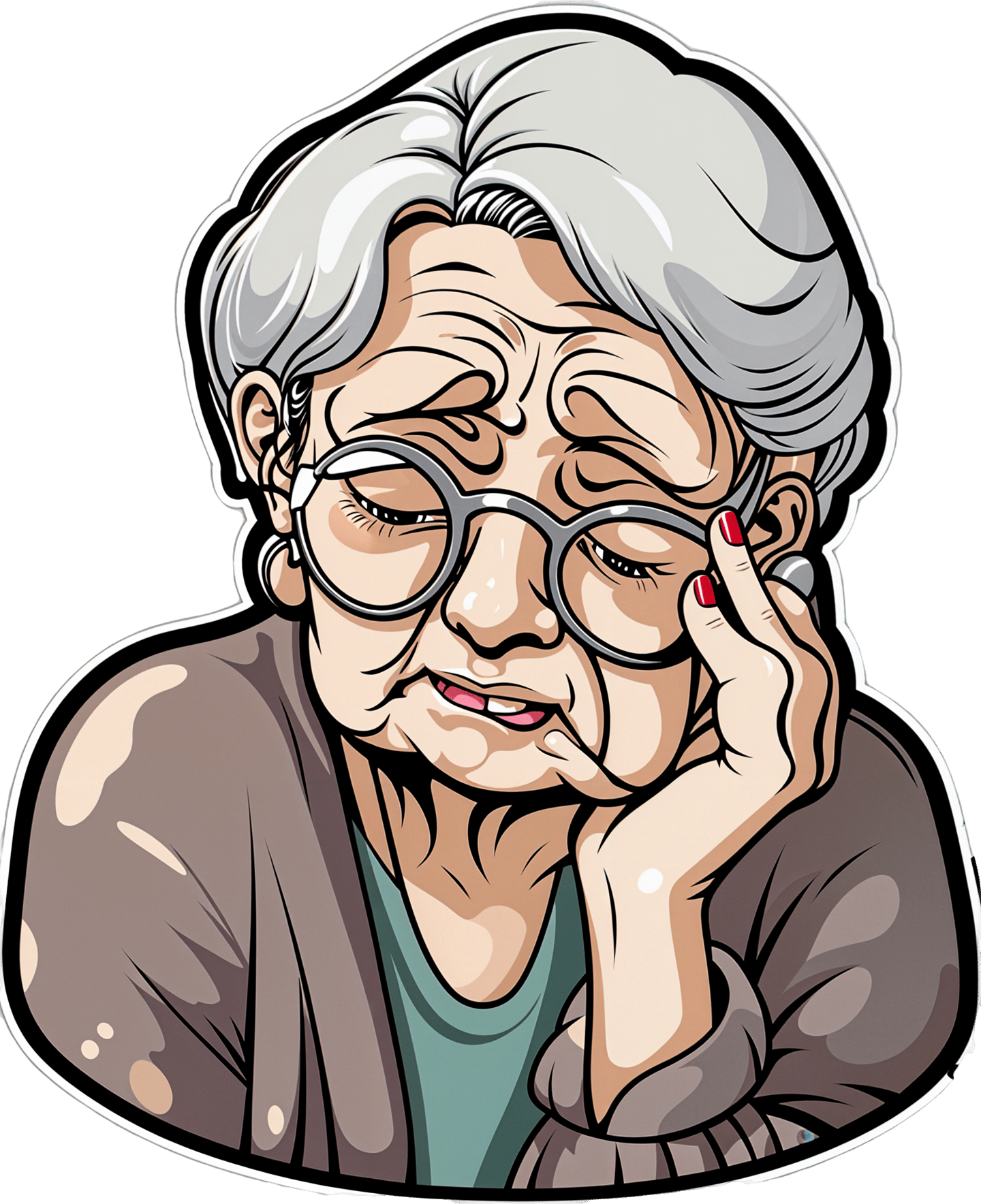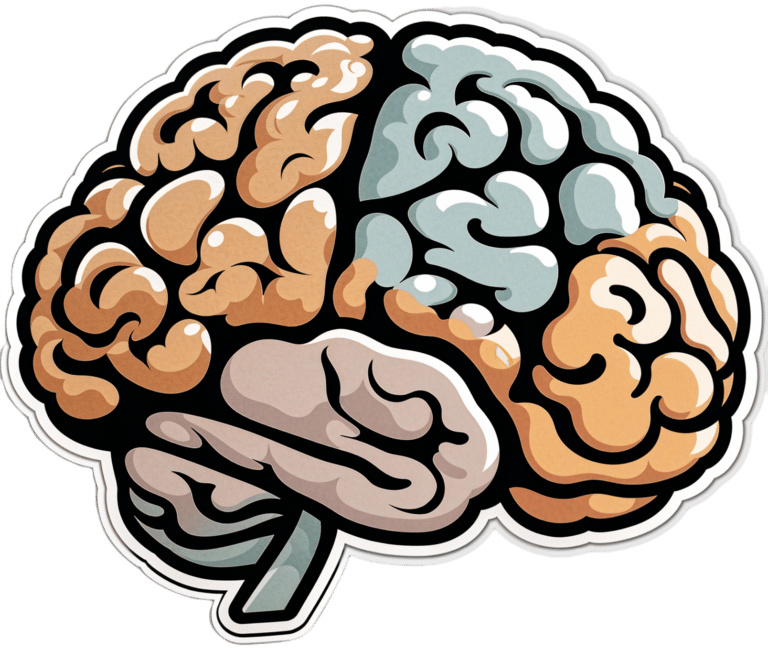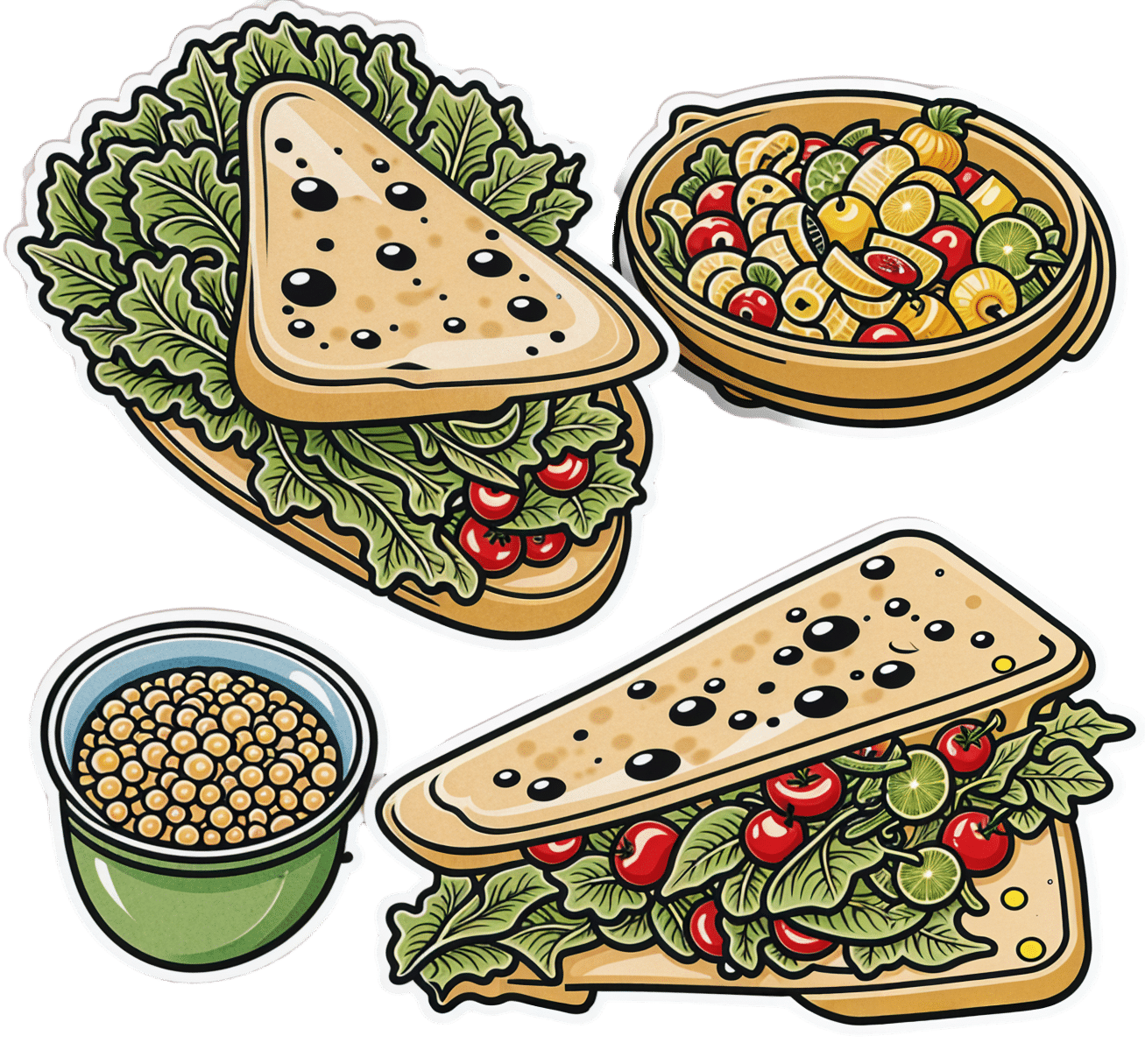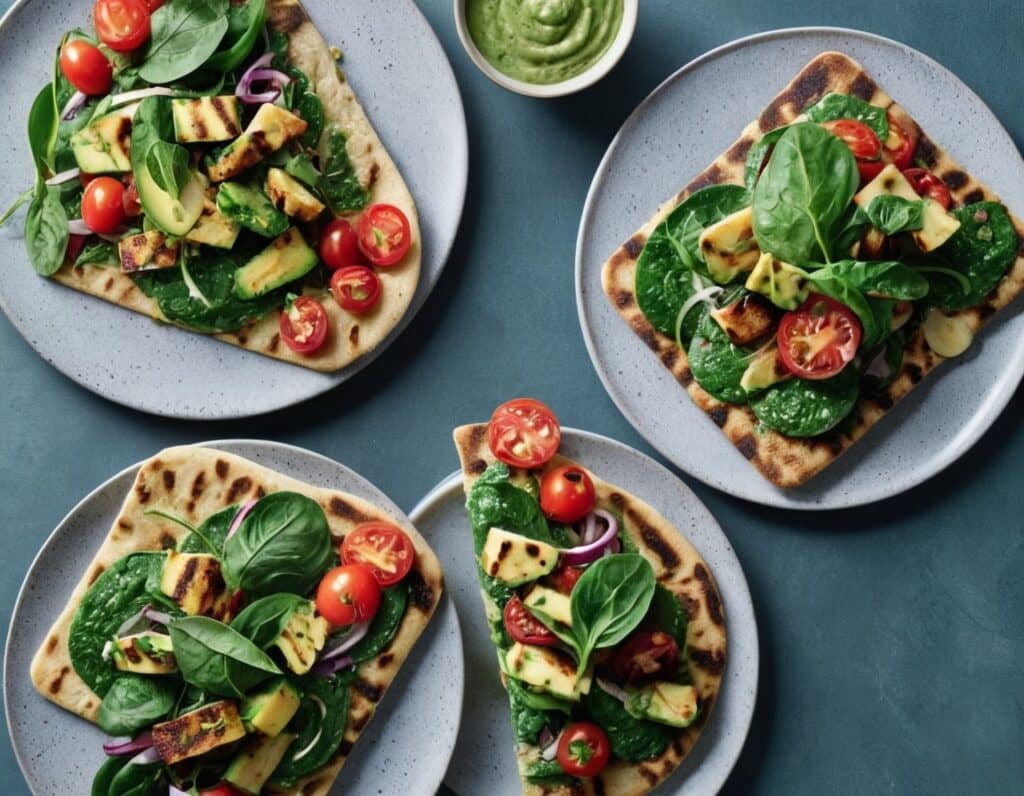
Elderly loss of energy
10almonds is reader-supported. We may, at no cost to you, receive a portion of sales if you purchase a product through a link in this article.
It’s Q&A Day at 10almonds!
Have a question or a request? You can always hit “reply” to any of our emails, or use the feedback widget at the bottom!
In cases where we’ve already covered something, we might link to what we wrote before, but will always be happy to revisit any of our topics again in the future too—there’s always more to say!
As ever: if the question/request can be answered briefly, we’ll do it here in our Q&A Thursday edition. If not, we’ll make a main feature of it shortly afterwards!
So, no question/request too big or small
❝Please please give some information on elderly loss of energy and how it can be corrected. Please!❞
A lot of that is the metabolic slump described above! While we certainly wouldn’t describe 60 as elderly, and the health impacts from those changes at 45–55 get a gentler curve from 60 onwards… that curve is only going in one direction if we don’t take exceptionally good care of ourselves.
And of course, there’s also a degree of genetic lottery, and external factors we can’t entirely control (e.g. injuries etc).
One factor that gets overlooked a lot, though, is really easy to fix: B-vitamins.
In particular, vitamins B1, B5, B6, and B12. Of those, especially vitamins B1 and B12.
(Vitamins B5 and B6 are critical to health too, but relatively few people are deficient in those, while many are deficient in B1 and/or B12, especially as we get older)
Without going so detailed as to make this a main feature: these vitamins are essential for energy conversion from food, and they will make a big big difference.
You might especially want to consider taking sulbutiamine, which is a synthetic version of thiamin (vitamin B1), and instead of being water-soluble, it’s fat-soluble, and it easily crosses the blood-brain barrier, which is a big deal.
As ever, always check with your doctor because your needs/risks may be different. Also, there can be a lot of reasons for fatigue and you wouldn’t want to overlook something important.
You might also want to check out yesterday’s sponsor, as they offer personalized at-home health testing to check exactly this sort of thing.
❝What are natural ways to lose weight after 60? Taking into account bad knees or ankles, walking may be out as an exercise, running certainly is.❞
Losing weight is generally something that comes more from the kitchen than the gym, as most forms of exercise (except HIIT; see below) cause the metabolism to slow afterwards to compensate.
However, exercise is still very important, and swimming is a fine option if that’s available to you.
A word to the wise: people will often say “gentle activities, like tai chi or yoga”, and… These things are not the same.
Tai chi and yoga both focus on stability and suppleness, which are great, but:
- Yoga is based around mostly static self-support, often on the floor
- Tai chi will have you very often putting most of your weight on one slowly-increasingly bent knee at a time, and if you have bad knees, we’ll bet you winced while reading that.
So, maybe skip tai chi, or at least keep it to standing meditations and the like, not dynamic routines. Qigong, the same breathing exercises used in tai chi, is also an excellent way to improve your metabolism, by the way.
Ok, back onto HIIT:
You might like our previous article: How To Do HIIT* (Without Wrecking Your Body)
*High-Intensity Interval Training (the article also explains what this is and why you want to do it)
Don’t Forget…
Did you arrive here from our newsletter? Don’t forget to return to the email to continue learning!
Recommended
Learn to Age Gracefully
Join the 98k+ American women taking control of their health & aging with our 100% free (and fun!) daily emails:
-
Taurine: An Anti-Aging Powerhouse? Exploring Its Unexpected Benefits
10almonds is reader-supported. We may, at no cost to you, receive a portion of sales if you purchase a product through a link in this article.
Dr. Mark Rosenberg explains:
Not a stimulant, but…
- Its presence in energy drinks often causes people to assume it’s a stimulant, but it’s not. In fact, it’s a GABA-agonist, thus having a calming effect.
- The real reason it’s in energy drinks is because it helps increase mitochondrial ATP production (ATP = adenosine triphosphate = how cells store energy that’s ready to use; mitochondria take glucose and make ATP)
- Taurine is also anti-inflammatory, antioxidant, and anticancer.
- In the category of aging, human studies are slow to give results for obvious reasons, but mouse studies show that supplementing taurine in middle-aged mice increased their lifespan by 10–12%, as well as improving various physiological markers of aging.
- Taking a closer look at aging—literally; looking at cellular aging—taurine reduces cellular senescence and protects telomeres, thus decreasing DNA mutations.
For more on the science of these, plus Dr. Rosenberg’s personal experience, enjoy:
Click Here If The Embedded Video Doesn’t Load Automatically!
Want to learn more?
You might also like to read:
- Taurine’s Benefits For Heart Health And More
- Dr. Greger’s Anti-Aging Eight
- Age & Aging: What Can (And Can’t) We Do About It?
Take care!
Share This Post
-
Green Paneer Flatbreads
10almonds is reader-supported. We may, at no cost to you, receive a portion of sales if you purchase a product through a link in this article.
These are versatile little snacks that can be eaten alone or served as part of a buffet; great for warm summer nights!
You will need
- 1 lb block of paneer (you can also use our plant-based high-protein paneer recipe)
- 7 oz unsweetened yogurt (your choice what kind; plant-based is fine; live cultured is best)
- 1 tomato, thinly sliced
- ½ red onion, thinly sliced
- 2 oz spinach leaves
- 1 tbsp lime juice
- 1 tsp red chili powder
- 4 wholewheat flatbreads
And then the marinade:
- 3 oz spinach
- ½ bulb garlic
- 1 tsp cumin seeds
- 1 tsp coriander seeds
- 1 tsp chili flakes
- ½ tsp MSG or 1 tsp low-sodium salt (MSG being the preferable and healthier option)
- 2 tbsp extra virgin olive oil
- Juice of ½ lime
Method
(we suggest you read everything at least once before doing anything)
1) Blend the marinade ingredients in a blender.
2) Cut the paneer into long cuboid chapes (similar to fish fingers) and put them in a bowl. Pour ⅔ of the marinade over them, and gently mix to coat evenly.
3) Heat a ridged griddle pan, and when hot, add the paneer and cook for 1–2 minutes each side without stirring, jiggling, or doing anything other than turning once per uncooked side.
4) Combine the onion, tomato, spinach leaves, lime choice, and chili powder to make the salad.
5) Add the remaining marinade to the yogurt to make a green dip.
6) Toast your flatbreads under the grill.
5) Assemble, putting the paneer and salad with a spoonful of the dip on the flatbread, and serve:
Enjoy!
Want to learn more?
For those interested in some of the science of what we have going on today:
- High-Protein Plant-Based Paneer
- Why You’re Probably Not Getting Enough Fiber (And How To Fix It)
- Our Top 5 Spices: How Much Is Enough For Benefits?
- Monosodium Glutamate: Sinless Flavor-Enhancer Or Terrible Health Risk?
Take care!
Share This Post
-
Can We Side-Step Age-Related Alienation?
10almonds is reader-supported. We may, at no cost to you, receive a portion of sales if you purchase a product through a link in this article.
When The World Moves Without Us…
We’ve written before about how reduced social engagement can strike people of all ages, and what can be done about it:
How To Beat Loneliness & Isolation
…but today we’re going to talk more about a specific aspect of it, namely, the alienation that can come with old age—and other life transitions too, but getting older is something that (unless accident or incident befall us first) all of us will definitely do.
What’s the difference?
Loneliness is a status, alienation is more of a process. It can be the alienation in the sense of an implicit “you don’t belong here” message from the world that’s geared around the average person and thus alienates those who are not that (a lack of accessibility to people with disabilities can be an important and very active example of this), and it can also be an alienation from what we’ve previously considered our “niche” in the world—the loss of purpose many people feel upon retirement fits this bill. It can even be a more generalized alienation from our younger selves; it’s easy to have a self-image that doesn’t match one’s current reality, for instance.
Read more: Estranged by Time: Alienation in the Aging Process
So, how to “un-alienate”?
To “un-alienate”, that is to say, to integrate/reintegrate, can be hard. Some things may even be outright impossible, but most will not be!
Consider how, for example, former athletes become coaches—or for that matter, how former party-goers might become party-hosts (even if the kind of “party” might change with time, give or take the pace at which we like to live our lives).
What’s important is that we take what matters the most to us, and examine how we can realistically still engage with that thing.
This is different from trying to hold on grimly to something that’s no longer our speed.
Letting go of the only thing we’ve known will always be scary; sometimes it’s for the best, and sometimes what we really need is just more of a pivot, like the examples above. The crux lies in knowing which:
- Is our relationship with the thing (whatever it may be) still working for us, or is it just bringing strife now?
- If it’s not working for us, is it because of a specific aspect that could be side-stepped while keeping the rest?
- If we’re going to drop that thing entirely (or be dropped by it, which, while cruel, also happens in life), then where are we going to land?
This latter is one where foresight is a gift, because if we bury our heads in the sand we’re going to land wherever we’re dropped, whereas if we acknowledge the process, we can make a strategic move and land on our feet.
Here’s a good pop-science article about this—it’s aimed at people around retirement age, but honestly the advice is relevant for people of all ages, and facing all manner of life transitions, e.g. career transitions (of which retirement is of course the career transition to end all career transitions), relationship transitions (including B/B/B/B: births, betrothals/break-ups, and bereavements) health transitions (usually: life-changing illnesses and/or disabilities—which again, happens to most of us if something doesn’t get us first), etc. So with all that in mind, this becomes more of a “how to reassess your life at those times when it needs reassessing”:
How to Reassess Your Life in Retirement
But that doesn’t mean that letting go is always necessary
Sometimes, the opposite! Sometimes, the age-old advice to “lean in” really is all the situation calls for, which means:
- Be ready to say “yes” to things, and if nobody’s asking, be ready to “hey, do you wanna…?” and take a “build it and they will come” approach. This includes with people of different ages, too! Intergenerational friendships can be very rewarding for all concerned, if done right. Communities that span age-ranges can be great for this—they might be about special interests (this writer has friends ranging through four generations from playing chess, for instance), they could be religious communities if we be religious, LGBT groups if that fits for us, even mutual support groups such as for specific disabilities or chronic illness if we have such—notice how the very things that might isolate us can also bring us together!
- Be open-minded to new experiences; it’s easy to get stuck in a rut of “I’ve never done that” and mistake that self-assessment for an uncritical assumption of “I’m not the kind of person who does that”. Sometimes, you really won’t be! But at least think about it and entertain the possibility, before dismissing it out of hand. And, here’s a life tip: it can be really good to (within the realms of safety, and one’s personal moral principles, of course) take an approach of “try anything once”. Even if we’re almost certain we won’t like it, and even if we then turn out to indeed not like it, it can be a refreshing experience—and now we can say “Yep, tried that, not doing that again” from a position of informed knowledge. That’s the only way we get to look back on a richly lived life of broad experiences, after all, and it is never too late for such.
- Be comfortable prioritizing quality over quantity. This goes for friends, it goes for activities, it goes for experiences. The topic of “what’s the best number of friends to have?” has been a matter of discussion since at least ancient Greek times (Plato and Aristotle examined this extensively), but whatever number we might arrive at, it’s clear that quality is the critical factor, and quantity after that is just a matter of optimizing.
In short: make sure you’re investing—in your relationships, in your areas of interest, in your community (whatever that may mean for you personally), and most of all, and never forget this: in yourself.
Take care!
Share This Post
Related Posts
-
Garden Cress vs Watercress – Which is Healthier?
10almonds is reader-supported. We may, at no cost to you, receive a portion of sales if you purchase a product through a link in this article.
Our Verdict
When comparing garden cress to watercress, we picked the garden cress.
Why?
While watercress is (rightly!) popularly viewed as a superfood for its nutritional density, the garden variety actually outperforms it.
In terms of macros first, garden cress has more protein, carbs, and fiber, while also having the lower glycemic index. Not that anyone’s getting blood sugar spikes from eating any kind of cress, but still, by the numbers, this is a clear win on the whole for garden cress in the category of macros.
When it comes to vitamins, garden cress has a lot (tens of times) more of vitamins A, B2, B3, B6, B7, B9, C, K, and choline, while watercress has (slightly) more of vitamins B1, B5, and E. An easy win for garden cress.
In the category of minerals, garden cress has more copper, iron, magnesium, manganese, phosphorus, and potassium, while watercress has more calcium. Another clear win for garden cress.
Taking a quick peep at polyphenols in case there’s anything to offset the above, garden cress has 13x more kaempferol (13mg/100g to watercress’s 1mg/100g), and/but watercress, in its favor, has quercetin (at 4mg/100g), which garden cress doesn’t. So, we say this category is also a win for garden cress, but watercress has its merits too.
👆 Let’s clarify: those numbers are all very good, and garden cress’s 13mg/100g kaempferol is absurdly high; most such quotients of most edible plants are orders of magnitude smaller; not to shoehorn in another vegetable, but just to give an example, savoy cabbage, which won on nutritional density vs bok choi recently, has 0.26mg/100g kaempferol and 0.12mg/100g quercetin (which were already very respectable numbers), so you see the difference in cress’s exceptionally generous delivery of these polyphenols!
Adding up the sections makes for an overwhelming win for garden cress!
Want to learn more?
You might like to read:
Sprout Your Seeds, Grains, Beans, Etc ← cress is a great example of this!
Take care!
Don’t Forget…
Did you arrive here from our newsletter? Don’t forget to return to the email to continue learning!
Learn to Age Gracefully
Join the 98k+ American women taking control of their health & aging with our 100% free (and fun!) daily emails:
-
Probiotics & Gas/Bloating
10almonds is reader-supported. We may, at no cost to you, receive a portion of sales if you purchase a product through a link in this article.
It’s Q&A Day at 10almonds!
Have a question or a request? We love to hear from you!
In cases where we’ve already covered something, we might link to what we wrote before, but will always be happy to revisit any of our topics again in the future too—there’s always more to say!
As ever: if the question/request can be answered briefly, we’ll do it here in our Q&A Thursday edition. If not, we’ll make a main feature of it shortly afterwards!
So, no question/request too big or small 😎
❝I read about probiotics and got myself some from amazon but having started them, now I have a lot of gas, is this normal?❞
As Tom Jones would say: it’s not unusual.
However, it’s also not necessary, and it is easy enough to get past!
And probiotics certainly have their place; see: How Much Difference Do Probiotic Supplements Make, Really?
What’s going on with your gas is…
We interrupt this article to bring back attention to our regular legal/medical disclaimer; please do remember that we can only speak in general health terms, cannot diagnose you, nor make any firm assurances about your health, nor prescribe treatment. What we can do is share information that we hope is educational, and if it helps you, so much the better. Always speak to your own doctor if you have concerns about your health.
Now, back to the article,,,
What’s going on with your gas is most probably what happens for a lot of people: you’ve just put a lot of bacteria into your gut, and congratulations, they survived (which is definitely not a given, more on that later, but their survival is what you wanted), and they are now thriving sufficiently that the output of their respiratory processes is tangible to you—in the form of abdominal bloating/gas.
Because your gut is a semi-closed system (literally there’s an opening at both ends, but it’s mostly quite self-contained in terms of its ecosystem, unless you have leaky gut syndrome, which is Very Bad™), this will generally fix itself within a few days at most—perhaps it even has by the time you’re reading this.
How does it fix itself you wonder? Because there’s only enough resources to sustain so many bacteria, what happens when we take a probiotic supplement (or food) is initially an overload of more bacteria than the gut can support (because unless you recently took antibiotics, the gut is pretty much always running at maximum capacity, because the bacteria there have no evolutionary reason to leave room for newcomers; they just multiply as best they can until the resources run out), and then the excess (i.e., those that are in excess of how many your gut can support) will die, and then the numbers will be back to normal.
Note: the numbers will be back to normal. However, that doesn’t mean the probiotics did nothing—what you’ve done is add diversity, and specifically, you’ve made it so that percentage-wise, you now have slightly more “good” bacteria in the balance than you did previously.
So, unless there are factors out of the ordinary: this is all usually self-correcting quite quickly.
Tips to make things go as smoothly as possible
Firstly, pay attention to recommended doses. If you take one, and think “that was delicious; I’ll have six more” then the initial effect will be a lot more than six times stronger, because of the nature of how bacteria multiply (i.e. exponentially) within minutes of reaching your gut.
Again, this will normally self-correct, but there’s no reason to cause yourself discomfort unnecessarily.
Secondly, if you take probiotics and do not get even a little gas or abdominal bloating even just a little bit, even just briefly… Then probably one of two things happened:
- The probiotics were dead on arrival (i.e. the supplement was a dud, or a “live culture” product in fact died before it got to you)
- The probiotics were fine, but your gut wasn’t prepared for them, and they died upon arrival
The latter happens a lot, especially if the current gut health is not good. What your probiotics need to survive (and bear in mind, because of their life cycle, they need this in minutes of arrival, which is their multiply-or-die-out window), is:
- Fiber, especially insoluble fiber
- In a place they can get at it (i.e. it was the most recent thing you ate, and is not several feet further down your intestines)
- Not too crowded with competitors (i.e. you just ate it, not last night)
Thus, it can be best to take probiotics on a mostly-empty stomach after enjoying a fibrous snack.
See also: What Do The Different Kinds Of Fiber Do? 30 Foods That Rank Highest
And for that matter: Stop Sabotaging Your Gut ← this covers some common probiotics mistakes/problems
If you’d rather take them on an entirely empty stomach, look for probiotic supplements that come with their own prebiotic fiber (usually inulin); these are often marketed as “symbiotics”.
We don’t sell them, but here’s an example product on Amazon for your convenience 😎
Another thing to bear in mind is that there is (unless your case is unusual) no reason to take the same kind of probiotic for more than one course (i.e. one container of however many servings it has). This is because one of two things will be the case:
- The probiotic worked, in which case, you now have thriving colonies of the bacterial species that that supplement provided
- The probiotic didn’t work, in which case, why buy that one again?
So, if supplementing with probiotics, it can be good to do so with new brand each time, with a gap in between each for your gut to get used to the new order of things.
Finally, if you’re making any drastic dietary change, likely this will result in similar gut disturbances.
In particular, if you are moving away from foods that feed C. albicans (the bad fungus that puts holes in your gut), then it will object strongly, cause you to crave sugar/flour/alcohol/etc, give you mood swings, and generally remind you that it has its roots firmly embedded in your nervous system. If that happens, don’t listen to it; it’s just its death throes and it’ll quieten down soon.
You can read more about that here:
Making Friends With Your Gut (You Can Thank Us Later)
Take care!
Don’t Forget…
Did you arrive here from our newsletter? Don’t forget to return to the email to continue learning!
Learn to Age Gracefully
Join the 98k+ American women taking control of their health & aging with our 100% free (and fun!) daily emails:
-
One Critical Mistake That Costs Seniors Their Mobility
10almonds is reader-supported. We may, at no cost to you, receive a portion of sales if you purchase a product through a link in this article.
Will Harlow, the over-50s specialist physio, advises what to do instead:
Nose over toes
Often considered the most important test of mobility in later life (or in general, but later life is when it tends to decline) is the ability to get up off the floor without using your arms.
Many seniors, meanwhile, struggle to get out of a chair without using their arms.
Now, sitting in chairs in the first place is not good for the health, but that’s another matter and beyond the scope of today’s article.
If, perchance, you struggle to get up from a chair (especially if it’s low/deep, like many armchairs are) without using your hands, then here’s the way to do it:
- While practicing, cross your arms in front of you, so that you cannot use them.
- Shuffle yourself towards the front of the chair. No, don’t use your arms for this either, do a little butt-walk instead, to get you to the front edge of the chair.
- Lean forwards to position your nose over your toes (hence the mnemonic: “nose over toes”; memorize that!), as this will put your center of gravity where it needs to be.
- Now, push with your feet to rise up and forwards; slowly is better than quickly (quickly may be easier, but slowly will improve your strength and balance).
For more on all of this plus a visual demonstration, enjoy:
Click Here If The Embedded Video Doesn’t Load Automatically!
Want to learn more?
You might also like to read:
Take care!
Don’t Forget…
Did you arrive here from our newsletter? Don’t forget to return to the email to continue learning!
Learn to Age Gracefully
Join the 98k+ American women taking control of their health & aging with our 100% free (and fun!) daily emails:








